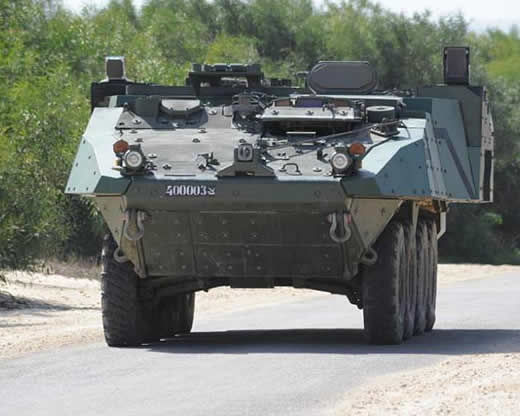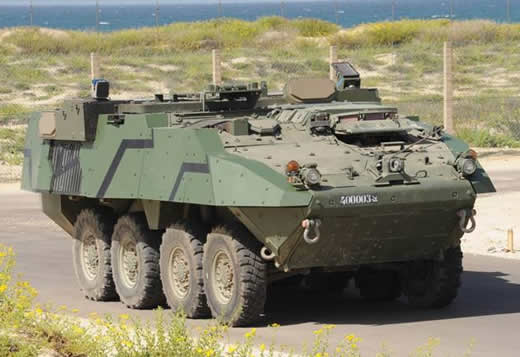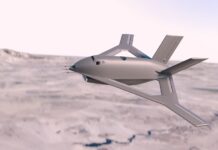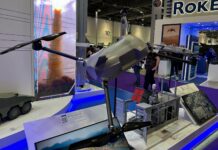

Another system, currently in development, is utilizing a new configuration, adapted to lighter vehicles. The Stryker system visible in the photo comprises of two types – the standard ASPRO-A on the vehicle’s left side and the new TROPHY-LIGHT on the left, both systems are linked to the ‘WindGuard’ radar, (two of the four panels are visible here). Both countermeasure units are adapted to match the latest add-on hybrid armor modules developed by Rafael for the Stryker. Photo: RAFAEL
General Dynamics Land Systems has recently concluded a successful Critical Design Review of its APS project. The company said the design is leading an effort to develop the first North American combat vehicle with a fully integrated Active Protection System (APS). The vehicle was tested with the Trophy HV system, similar to the one currently protecting Israel’s Merkava 4M tanks.[nonmember] More information for members [nonmember][ismember]The only AFV currently deployed with an integrated APS is the Israeli Merkava Main Battle Tank carrying the RAFAEL Trophy APS since 2009. To match the lighter and more compact Stryker, RAFAEL developed a smaller version designated Trophy MV and demonstrated it in APS firing tests in the USA. According to RAFAEL, Trophy-MV offers the same hard kill capabilities as the Trophy-HV in addition to soft kill capabilities. RAFAEL said the Trophy MV is currently at TRL 7 and the first prototype is currently undergoing enhanced field testing. The system weighs about 450kg and is designed for operation on light- and medium-weight vehicles of 10-30 ton. vehicles.[ismember]
Following the completion of CDR General Dynamics plans to validate the fully integrated APS on a Light Armored Vehicle III (LAVIII) demonstrator, in firing tests scheduled for later this year. The integration program is funded by General Dynamics. As the vehicle designer, the company has system design authority over the program. The company said the team it is leading will demonstrate APS technology readiness and integration efficiencies, and reduce the time it takes to bring this lifesaving survivability technology to customers. “General Dynamics Land Systems has more than 20 years of experience with APS technology integration and development” said Sonya Sepahban, Land Systems senior vice president, engineering, development and technology. But she did not provide further details on the team members. “We will continue to leverage our world-class systems engineering and unique survivability expertise, coupled with broad knowledge of APS technologies, to implement this capability on a variety of platforms for our customers” she added. [ismember]In the past GDLS explored teaming agreements with the two Israeli APS developers – RAFAEL and IMI. GDLS has also worked with SAAB, demonstrating the Avitronics LEDS system on the LAV III.
Since the Army terminated the Manned Ground Vehicle program which included an integrated APS requirement, no AFV program is currently slated to carry APS, although the Army considered adding such capability to its upcoming programs – JLTV, GCV and AMPV, no decision or funding have been allocated for further APS evaluations. In the meantime, APS evaluations and testing are funded by the companies. In recent months, Raytheon, Artis and currently GDLS announced company funded tests keeping the programs alive.

[/ismember]












